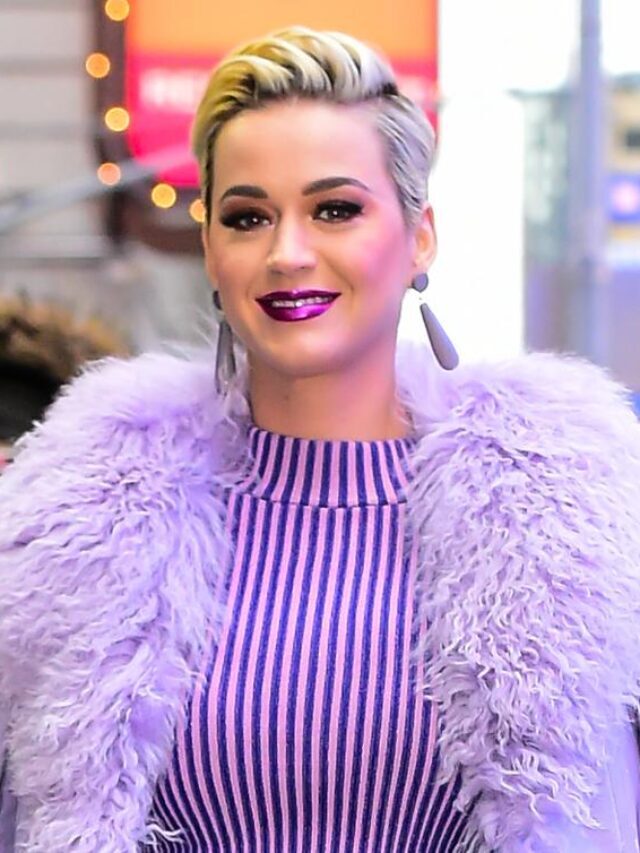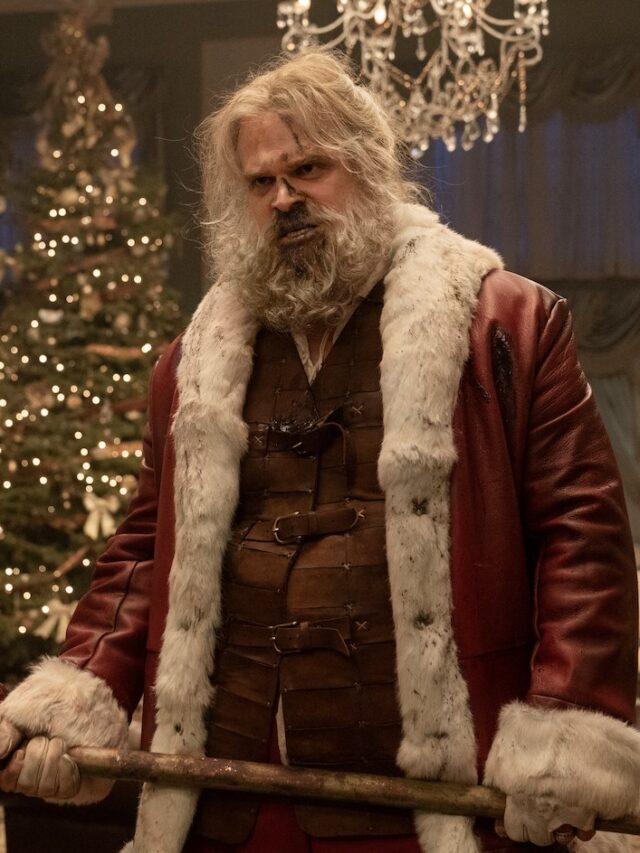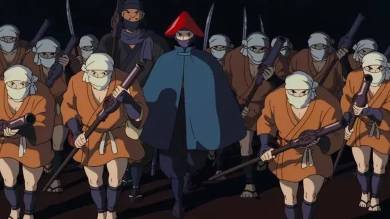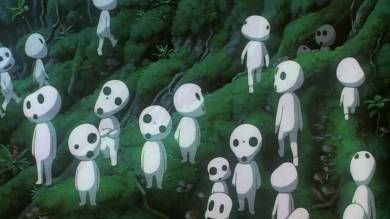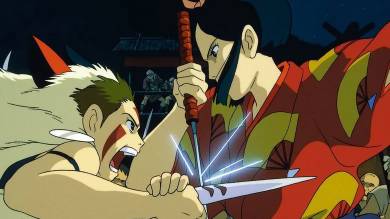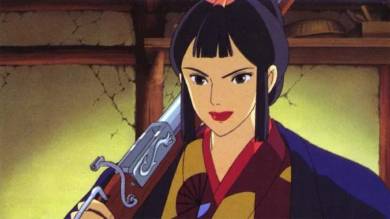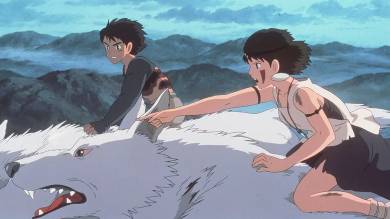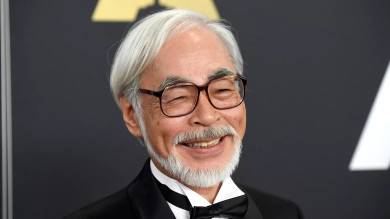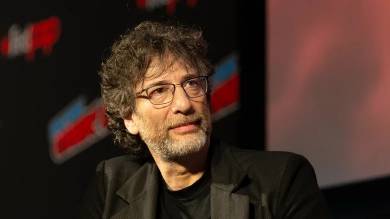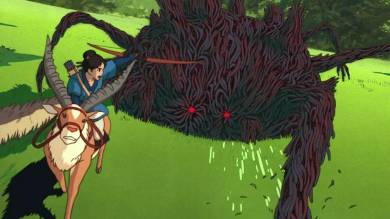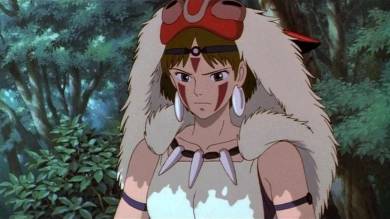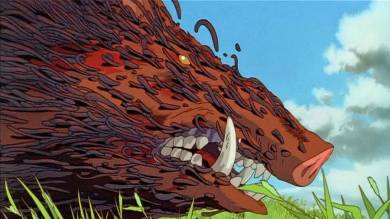There are cartoons for kids that are all smiles and no problems, and then there is “Princess Mononoke”; the two are not the same. Famous animator Hayao Miyazaki was best known for his charming, albeit emotionally challenging, children’s movies like “Kiki’s Delivery Service” and “My Neighbor Totoro” before the release of what some see as his greatest opus. He took a darker turn with “Princess Mononoke” in 1997, focusing on the atrocities of war and environmental degradation.
Miyazaki has insisted that “Princess Mononoke” is a movie that kids (at least of a certain age) should see because the lessons it teaches are crucial, especially for those who still have hope for the future, even though it may not be quite appropriate for all ages. You can undoubtedly understand why some parents might be reluctant to share the movie to their children once you’ve seen it. It’s startlingly violent, especially in the opening minutes, and the plot is anything but happy-go-lucky.
But as audiences must anticipate from Miyazaki’s movies, the planet is populated by a variety of fanciful (and charming) creatures, such as giant wolves and the cutest little spirits you’ve ever seen. Given the amount of work that went into making it, it is probably Miyazaki’s most complex film. Once the curtain is pulled back, there is a wealth of information to be discovered. Curious? Read on to learn “Princess Mononoke’s” hidden meaning.
Table Of Content
- 1 Contemporary conflicts convinced Miyazaki to make his darkest film
- 2 Every piece of sound design had its own logic
- 3 Harvey Weinstein and the katana
- 4 Hayao Miyazaki was inspired by Westerns
- 5 Lady Eboshi has a fascinating backstory
- 6 Miyazaki has hope for the future of the characters
- 7 Miyazaki’s strict rules about the script’s translation
- 8 Neil Gaiman wrote the English translation of Princess Mononoke
- 9 One of the scenes took nearly two years to draw
- 10 The English dub features an all-star cast
- 11 The film’s title was only partially translated into English
- 12 The inspiration for the boar monster
- 13 There might be a connection between Princess Mononoke and My Neighbor Totoro
Contemporary conflicts convinced Miyazaki to make his darkest film
“Princess Mononoke” is a startlingly dark and serious film when compared to earlier films like “Kiki’s Delivery Service” and “My Neighbor Totoro.” Hayao Miyazaki discussed how hazardous the concept was in an interview with Empire, particularly in light of his previous works. He claimed that he learned about the violence in the former Yugoslavia while working on “Porco Rosso” and was disappointed that humanity kept making the same mistakes. After that, he continued, “we couldn’t go back and do some movie like ‘Kiki’s Delivery Service’.” “It appeared as though unblessinged children were being born into our earth. How could we fool them into thinking we’re content?”
He acknowledges that, as he had anticipated, the production of “Mononoke” had worn out the animation team. He wasn’t confident in the finished product, though, even after the movie was finished. He was unsure about the target demographic and didn’t understand the movie himself. In the beginning, I thought, “This is something children shouldn’t see,” but in the end, I recognised, “No, this is something children must see,” since adults didn’t understand it; nevertheless, children did. He was motivated to start making films again after realising the significance of the movie he had made and how best understood it would be by kids.
Every piece of sound design had its own logic
There are other aspects of “Princess Mononoke” that merit our attention, even though viewers may spend the majority of their viewing time awestruck by the film’s exquisite animation. During their Twitter Q&A, Studio Ghibli shared some fascinating details regarding the movie’s sound design, which is a crucial aspect of all filmmaking. They disclosed that the peculiar sound the tree spirits make was produced using wooden castanets since the spirits’ link to nature prompted the makers to believe they should have a woody tone.
One aspect of the sound design that producer Toshio Suzuki is particularly pleased of may be heard during the struggle between San and Lady Eboshi. Suzuki claimed that much care was taken to ensure that the sound of Lady Eboshi’s metal blade distinguished it from San’s bone dagger. We definitely wouldn’t have picked up on this distinction on our own, but now that we do, we’ll have to pay more attention when we watch it again.
Harvey Weinstein and the katana
Hayao Miyazaki allegedly threatened Harvey Weinstein with a sword while the American dub was being made, according to a long-running rumour. The truth is that, as Miyazaki admitted to The Guardian in 2005, while he didn’t threaten Weinstein directly, his producer did. According to the legend, Weinstein received a katana in the mail along with the two words, “No cuts.” (Weinstein was referred to as “Harvey Scissorhands” in the business due to how much he would cut from movies.)
Despite not being the one who sent the threat, Miyazaki did meet with the disgraced Weinstein and hear his demands. He claimed, “I did travel to New York to meet this man, this Harvey Weinstein, and I was deluged with this aggressive attack, all these demands for cuts. “I overcame him.” Although we don’t advise it, dispatching swords through the mail is undoubtedly a successful strategy to vanquish your adversaries.
Hayao Miyazaki was inspired by Westerns
Toho/Studio Ghibli’s “Princes Mononoke” has a wide range of characters and thematic ideas, therefore it makes sense that Hayao Miyazaki drew influence from a variety of sources. According to the official “Princes Mononoke” website from Miramax, Miyazaki is a major admirer of American filmmaker John Ford, who is most known for his Western films. Many of John Ford’s movies, including “My Darling Clementine,” are set in frontier settlements; Miyazaki pays respect to this by building Irontown (or Tatara Ba), a town that is conveniently categorised in this way.
Like in a Western, Irontown is populated by outcasts and criminals who have the will to endure the harsh conditions of the frontier. Of course, “Princes Mononoke” also makes note of the fact that this tenacity and ambition domination over one’s realm can only lead to calamity and environmental damage, which is precisely what Lady Eboshi’s pursuit of the forest spirit signifies.
Lady Eboshi has a fascinating backstory
Lady Eboshi, who is neither entirely good nor entirely terrible, is maybe the most intriguing character in “Princess Mononoke.” She gives a group of formerly sex workers prominent responsibilities in the operation of Irontown and gives lepers a place to live who would otherwise be rejected. At the same time, she has no qualms about destroying the holy forest spirit since she is determined to advance industrialization at the expense of the environment.
Studio Ghibli responded to a query concerning the character’s origins in a Twitter Q&A with fans. Miyazaki has reportedly said that Eboshi was sold as a slave and later married the head of a group of Japanese pirates, according to Sora News 24 and Ghibli. But that is not where her narrative ends. She killed him after mastering the art of combat, took his wealth, and fled to mainland Japan.
This background explains Lady Eboshi’s development into the assured, capable woman she is now and explains why she has such affection for the former sex workers employed in Irontown. Several Twitter users commented on what a fascinating character Lady Eboshi is, with one supporter writing, “She embodies modernity in every way. She is completely confident in her ability to carry out the necessary tasks in order to accomplish her objectives.”
Miyazaki has hope for the future of the characters
Many reviewers of the movie have applauded “Princess Mononoke” for avoiding trite happy endings and for dividing the world into good and evil. An American journalist questioned Hayao Miyazaki about if he saw San and Ashitaka as a tragic couple because they are unable to be together in light of the movie’s somewhat ambiguous ending. Miyazaki responded by saying, “They still participate. They continue to have a wonderful relationship, I’m sure.” Therefore, they are not the tragic couple that some people think they are.
Miyazaki yet believed that neither of their futures would be simple. The challenge, he said, is that although Ashitaka will work to keep San alive, he will also devote himself to aiding the residents of Iron Town. And this will split Ashitaka in two, said Miyazaki. “This won’t deter him, though. He values both, thus.” He continued by saying that this challenge is precisely the kind of lesson that modern audiences may learn from the tale. Even though there isn’t a sentimental happy ending, life does continue on, according to the creator.
Miyazaki’s strict rules about the script’s translation
Hayao Miyazaki has worked with American production companies like Disney (and Miramax, which was once a division of Disney) for many years, but things haven’t always gone smoothly. For understandable reasons, Miyazaki frequently finds himself at odds with studio chiefs who wish to drastically alter his films in order to appeal to the American market. As “Princess Mononoke” underwent the translation process, Miyazaki created a list of requirements that he believed needed to be included (or deleted) from the English screenplay in order to maintain the integrity of the work.
Miyazaki offered help on casting, although his recommendations were frequently about extremely specific ideas, according to producer Steve Alpert (via Polygon). Miyazaki reportedly said things like “no contemporary vocabulary or modern slang” and “select good voices; the voices are crucial,” according to Alpert. Additionally, he wanted to make sure that individuals working on the dub were aware of the cultural class differences depicted in the movie, such as the fact that Lady Eboshi is not low class while the residents of Irontown are, and that Ashitaki, as a prince, behaves in an outdated manner. Additionally, Miyazaki insisted that the weaponry in the movie should never be referred to as rifles because they are more akin to “portable canons.”
Neil Gaiman wrote the English translation of Princess Mononoke
The authorship of the English translation is one of the “Princess Mononoke” lore that has been retold the most. The renowned British author Neil Gaiman is said to have translated the script into English, but since his name doesn’t appear in the credits, no one is entirely sure. Gaiman finally verified this on Twitter in 2019 to make it official. He claimed that the reason he isn’t listed in the credits is because Studio Ghibli requested that some Miramax executives be left off the list, so they chose to leave off his name rather than their own.
Oddly enough, Quentin Tarantino was initially requested by Miramax to write the script, and Tarantino recommended Neil Gaiman after declining the position, according to SyFy. Gaiman’s work would prove to be more challenging than one may anticipate because he had to juggle demands from several parties. The requests for the script came first from Miyazaki, then from Miramax executives, and finally from Harvey Weinstein’s specific demands to Miramax.
The people at Miramax believed that some components of the movie wouldn’t be well received by American audiences without considerable changes, according to film producer Steve Alpert’s article in Polygon. For instance, a Miramax executive believed that because Royal Ashitaka doesn’t live in a palace or wear fancy clothes, people wouldn’t think he is a prince. But Gaiman persisted, and as a result, he created what is frequently regarded as one of the best translations of Miyazaki’s works.
One of the scenes took nearly two years to draw
The Toho/Studio Ghibli animated picture “Princess Mononoke” is a remarkable achievement in animation, and given how long it is, it is not surprising that it took so long to make. Only about 10% of the movie, according to Miramax, is computer animated, meaning the remainder was manually drawn. The movie required the creation of almost 144,000 cels, or transparent pieces of paper on which animation is done.
Near the beginning of the film is one of the most impressive animation-wise sequences. A wild pig that has contracted the Tatarigami curse is encountered by Ashitaka. The wild boar gets entirely consumed by the horrific Tatarigami, which appears to be made up of hundreds of snake-like monsters. One moviegoer tweeted Studio Ghibli to inquire about the scene, stating, “This has to be CG, right?” (via Sora News 24).
It’s a reasonable assumption, yet it’s completely false. In response to the tweet, Studio Ghibli stated, “Even though the scene is only a few minutes long, it took one year and seven months to finish! The section where the snakes slither slowly was very challenging.” One of the Ghibli artists claimed that it became increasingly difficult to draw as it progressed, and they remarked that it reportedly required 5,300 drawings to be finished. The next time we see this scene, we’ll undoubtedly be reflecting on all that work.
The English dub features an all-star cast
Hayao Miyazaki requested that “excellent voices” be used in the English version of the movie, pleading with Miramax officials to do so. Fortunately, they took Miyazaki’s advise in this area because the English-speaking voice cast for the movie is stacked with sexy superstars. Ashitaki is portrayed by Billy Crudup, San by Claire Danes, Lady Eboshi by Minnie Driver, Jiko-bô by Billy Bob Thornton, and Moro by Gillian Anderson.
Since Anderson was at the pinnacle of her “X-Files” celebrity when the English dub debuted in 1999, she was a particularly significant casting coup for the movie. Anderson revealed that she had long been a fan of Miyazaki’s films when asked by Hollywood.com about her acquaintance with them before playing in “Princess Mononoke” during the movie premiere. Anderson commended the way all of his films have a lesson to teach you, calling his films “incredibly spiritual, very beautiful, and extremely reverent.” Anderson wasn’t sure at the moment if she would show the movie to her kids because “Princess Mononoke” was a lot more intense than his other films.
The film’s title was only partially translated into English
The title of “Princess Mononoke” can be a little unclear to English-speaking viewers. In the movie, neither a person named Princess Mononoke nor the phrase “princess mononoke” are ever used. San, the wolf-daughter and forest-guardian who is never referred to by that name, is the character that stands in for Princess Mononoke.
The title of the movie was only partially translated into English, which is the cause of the confusion. The word “hime” means “princess” in the Japanese title for the movie, which is “Mononoke-hime.” Since “Mononoke” is a word that is challenging to translate into English, the title was left untranslated. The title actually reads “Princess of the Furious Spirits,” since it roughly translates to “vengeful or angry spirit.” San’s name, which in Japanese means “three,” is supposed to be a reference to the fact that she is the third offspring of her wolf godparent, Moro.
The inspiration for the boar monster
The early sequence in “Princess Mononoke” where a wild boar is controlled by the Tatarigami curse is one of the film’s most disturbing scenes. This transforms the boar into a vicious monster that Ashitaki must kill; in doing so, he incurs a curse. Hayao Miyazaki said how the rage-filled scene with the boar monster was intended to depict the common human emotion in a conversation with Roger Ebert. He said, “I’m a very emotional guy, and I feel like black insects crawl out of my pores when I get angry or upset. It was challenging for my staff to understand what it’s like to be overcome by excessive wrath because they tend to be more quiet.
When Ebert questioned whether the boar was inspired by his own personal fury, Miyazaki acknowledged that it might be, but he also added that he believes rage and violence are instincts that all people share. How to restrain and regulate that impulse is the problem we as humans face, he continued. Although some people might desire to protect kids from these urges, Miyazaki insisted that it’s crucial for them to accept this reality because it’s a part of everyone’s existence.
There might be a connection between Princess Mononoke and My Neighbor Totoro
There has been a lingering speculation that “Princess Mononoke” and Hayao Miyazaki’s 1988 film “My Neighbor Totoro” have a connection. Studio Ghibli fans are sometimes eager to establish connections between Hayao Miyazaki’s numerous works. According to the legend, the final tree spirit from “Princess Mononoke” later evolved into one of the Totoros in the 1988 movie. Despite the fact that “Totoro” was released prior to “Mononoke,” its events occur several hundred years afterwards.
Studio Ghibli responded to a fan who inquired on Twitter about the veracity of the claim. They said, “It seems Miyazaki said something along those lines to the staff during production” (as translated by Sora News 24). Even though the answer isn’t definitively “yes,” it does seem like there’s a fair likelihood that Miyazaki did recognise the similarities between the two movies at some time. In any case, it’s entertaining to imagine that, similar to the Pixar timeline hypothesis, all of Miyazaki’s films take place in the same universe or on the same timeframe.
Being a binge-watcher himself, finding Content to write about comes naturally to Divesh. From Anime to Trending Netflix Series and Celebrity News, he covers every detail and always find the right sources for his research.



